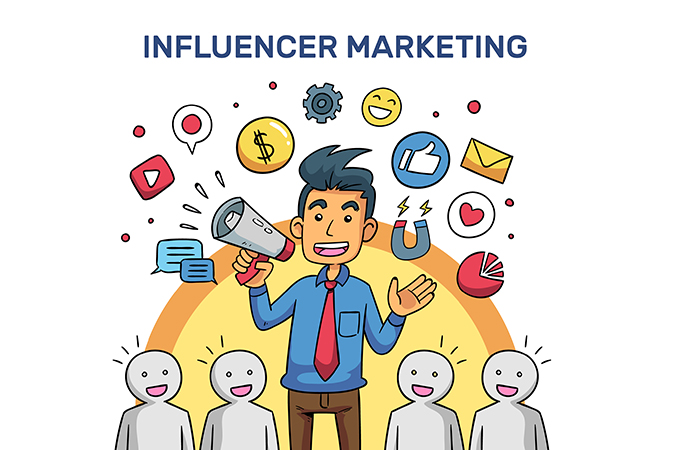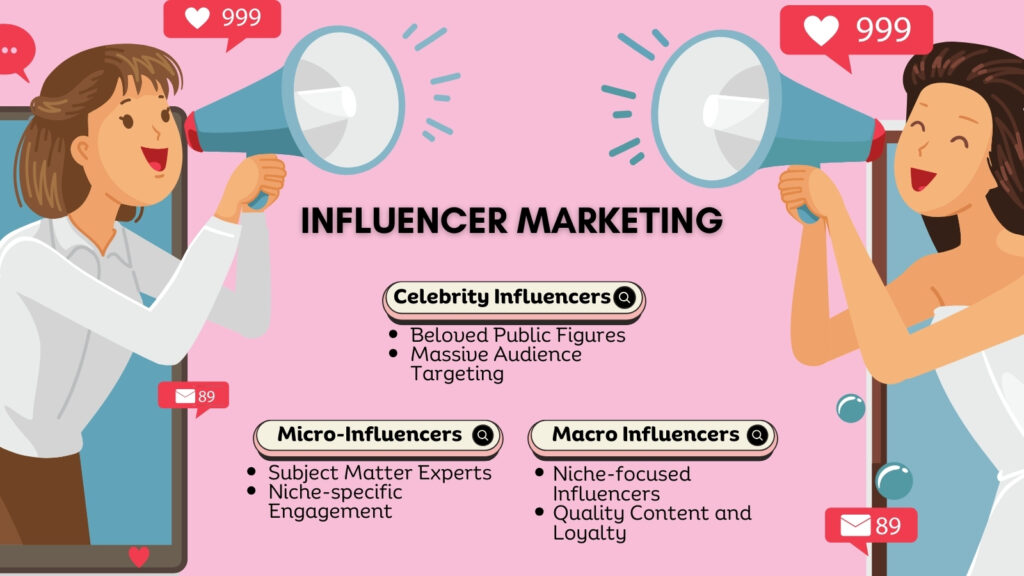Table of Contents
ToggleThe Rise of Influencer Marketing: A Force to Be Reckoned With
The rise influencer marketing has exploded in recent years, transforming the way brands connect with consumers. No longer solely reliant on traditional advertising, businesses are turning to influential figures across various platforms to promote their products and services. This shift in marketing strategy has proven incredibly effective, leveraging the trust and engagement these individuals have cultivated with their followers.
What is Influencer Marketing?
At its core, the rise influencer marketing involves partnering with individuals who have a significant online following to endorse a brand. These “influencers” can range from celebrities and social media stars to niche bloggers and micro-influencers with smaller but highly engaged audiences. They utilize their platforms – Instagram, YouTube, TikTok, Twitter, and more – to create content that authentically integrates the brand into their lives and resonates with their followers.

Why is Influencer Marketing So Effective?
- Authenticity and Trust: Influencers have built strong relationships with their audiences, fostering trust and credibility. Their endorsements feel more genuine and less “salesy” compared to traditional advertising.
- Targeted Reach: By partnering with influencers who cater to specific niches, brands can precisely target their ideal customer segments. This allows for highly effective campaigns with minimal wasted reach.
- Increased Engagement: Influencer content often sparks higher levels of engagement – likes, comments, shares – compared to traditional brand posts. This organic interaction helps amplify brand visibility and reach a wider audience.
- Cost-Effectiveness: Depending on the influencer and the campaign, the rise of influencer marketing can be more cost-effective than traditional advertising channels, offering a higher return on investment.
- Data-Driven Insights: Many platforms provide detailed analytics, allowing brands to track campaign performance and gain valuable insights into audience behavior.
The Evolution of Influencer Marketing
- From Celebrities to Micro-Influencers: While celebrity endorsements still hold weight, the rise of micro-influencers – those with smaller but highly engaged followings – has become a significant trend. Micro-influencers often have stronger relationships with their audiences, leading to higher levels of trust and authenticity.
- Beyond Social Media: The rise of Influencer marketing is expanding beyond traditional social media platforms. Platforms like Twitch, podcasts, and even gaming platforms are now playing a crucial role in connecting brands with their target audiences.
- Focus on Authenticity and Transparency: As consumers become more discerning, the emphasis on authenticity and transparency is growing. Influencers are increasingly expected to disclose sponsored content clearly and honestly, maintaining trust with their followers.
The Future of Influencer Marketing
- Artificial Intelligence (AI) and Automation: AI is playing an increasingly important role in influencer marketing, from identifying the right influencers to optimizing campaign performance.
- The Rise of Live Streaming: Live streaming platforms like Instagram Live and Twitch offer a more interactive and engaging experience, allowing brands to connect with audiences in real-time.
- Integration with Other Marketing Channels: The rise of Influencer marketing is becoming increasingly integrated with other marketing channels, creating a more holistic and impactful approach.

Conclusion
the rise influencer marketing has undeniably become a cornerstone of modern marketing strategies. By leveraging the trust and engagement of influential figures, brands can effectively reach their target audiences, build brand awareness, and drive sales. As the landscape continues to evolve, brands that embrace authentic partnerships and innovative approaches will reap the greatest rewards.

Challenges and Considerations:
- Measuring ROI: While engagement is crucial, accurately measuring the true return on investment (ROI) of influencer marketing campaigns can be challenging. Tracking conversions and attributing sales directly to influencer efforts requires sophisticated analytics and careful campaign design.
- Authenticity and Transparency: Maintaining authenticity is paramount. Consumers are increasingly savvy and can easily detect inauthentic or forced endorsements. Brands must prioritize partnerships with influencers who genuinely align with their brand values and whose followers trust their recommendations.
Ethical Concerns:
- Disclosure: Clear and conspicuous disclosure of sponsored content is crucial to maintain trust with audiences.
- Exploitation: Concerns exist regarding the potential exploitation of influencers, particularly micro-influencers, who may not always receive fair compensation or adequate support.
- Impact on Consumer Behavior: Some argue that influencer marketing can contribute to unrealistic beauty standards, promote materialism, and influence consumer behavior in potentially harmful ways.
- Staying Ahead of the Curve: The rise of influencer marketing landscape is constantly evolving. Brands need to stay informed about emerging trends, platforms, and best practices to maintain effectiveness. This includes adapting to new formats, identifying and partnering with the right influencers, and continuously refining campaign strategies.
Best Practices for Successful Influencer Marketing:
- Define Clear Objectives: Set specific, measurable, achievable, relevant, and time-bound (SMART) goals for each campaign.
- Identify the Right Influencers: Conduct thorough research to identify influencers who align with your brand values, target audience, and campaign objectives. Consider factors such as audience demographics, engagement rates, and overall brand fit.
- Build Long-Term Relationships: Focus on building long-term relationships with a select group of influencers rather than engaging in one-off campaigns. This fosters trust and allows for more authentic and impactful collaborations.
- Create High-Quality Content: Encourage influencers to create high-quality, engaging content that resonates with their audience. Provide clear guidelines and creative briefs, but also allow for some creative freedom.
- Track and Analyze Results: Monitor campaign performance closely using relevant metrics (e.g., reach, engagement, website traffic, conversions). Analyze the data to identify areas for improvement and optimize future campaigns.
- Prioritize Authenticity and Transparency: Always prioritize authenticity and transparency in all influencer marketing efforts. Clearly disclose sponsored content and ensure that influencers accurately represent the brand and its values.
Disclaimer: This blog post is for informational purposes only and should not be considered financial or investment advice.
